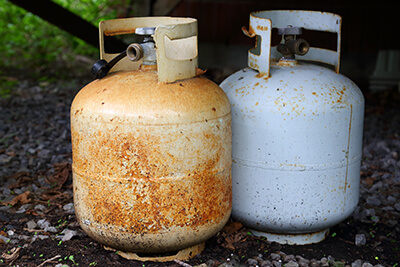
Because we represent people who have suffered serious burn injury, we are all too aware of how quickly and unexpectedly these injuries can occur. Burn injuries are traumatic with life-long affects. We offer the following information to help you stay safe around common household items that can be extremely dangerous.
Commonly Used Combustible Vapors and Aerosols
In our daily lives, we recognize certain products that create flammable or explosive vapors – products such as gasoline, kerosene, liquefied propane gas (LP), and charcoal lighter fluids. But there are other things that create potentially dangerous, explosive flammable vapors with which many of us have regular contact, such as chlorides and chlorines, bromines, acetates, ethanol, methanol, paint thinner, and certain paints and stains. We usually understand not to light a match or have open flame around gasoline, kerosene, and LP gas. We know and generally understand the risks of explosion during use with these materials. Even so, there are still use and storage practices that are commonly done which are unsafe.
Keep Flammables Out of the Basement!
Never store flammable liquids in a basement. Flammable vapors can and do escape the containers in which people are storing gasoline, turpentine, oil-based paints and stains, chlorine, ethanols, etc. These vapors travel long distances across a floor in concentrations within the flammable range and at a height typically 12-14.” The vapors can be ignited by the pilot lights of gas or propane appliances, such as water heaters, furnaces, and gas dryers. Ignition typically manifests in a large fiery explosion that may not only destroy the home but cause repairs, burn and other injury, or even death. Even the act of turning on an electric switch can spark an explosion.
It’s Grilling Season: Be Cautious with Propane
With the grilling season about to hit full stride, we urge you to be extremely mindful of transporting and storing propane tanks typically used in gas grills. Like the description above, leaking propane can explode when an electric switch causes a spark. We are aware of a situation in which a tank being transported in the trunk of a car leaked propane which filled the trunk. When the car’s driver turned the ignition, the propane exploded, causing devastating, life-long injury to the passengers. The solution is to store flammables away from ignition sources and where there is adequate ventilation and air exchange. Be sure containers are tightly sealed and in a stable location where they will not topple or spill.
Campfires and Flammables Don’t Mix
We have all experienced the frustration of camp fire that will not quite get going, or the charcoal in the grill taking too long to get hot. We see example after example of people pouring gasoline, kerosene, or lighter fluid on a smoldering fire or grill. Not only is there extreme risk of a flash burn that will cause injury, but there is substantial risk of a large explosion as well.
When flammable liquids are added to a smoldering fire or grill, there is a significant risk that, in addition to the immediate “whoosh” of the flames, the vapors tracing back to the container from which the fluid was poured can ignite. The burning vapor trail leads back to the containers of flammable fluid, which can either explode or become a flamethrower, spewing flames several feet away.
Knowledge and prevention can help you and your loved ones avoid a lifetime of pain and remorse. Use caution and stay safe this summer!
